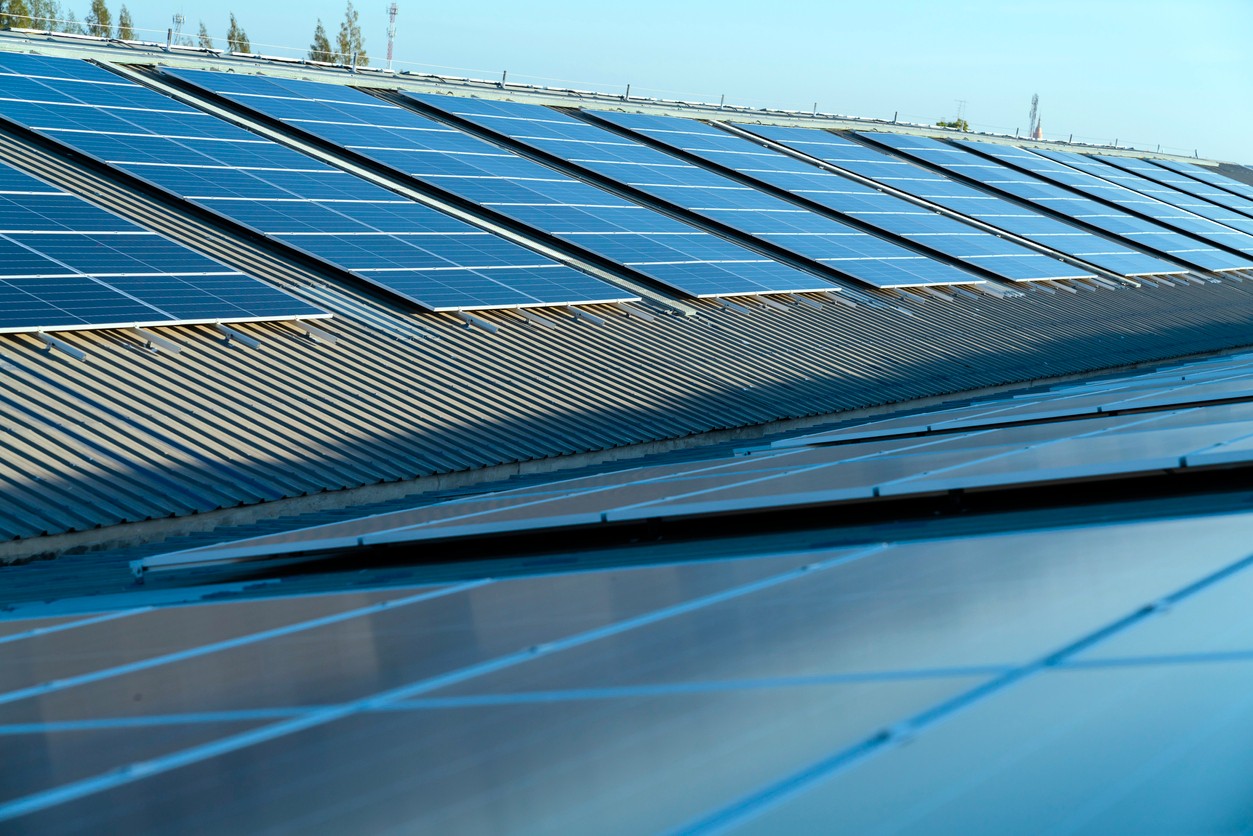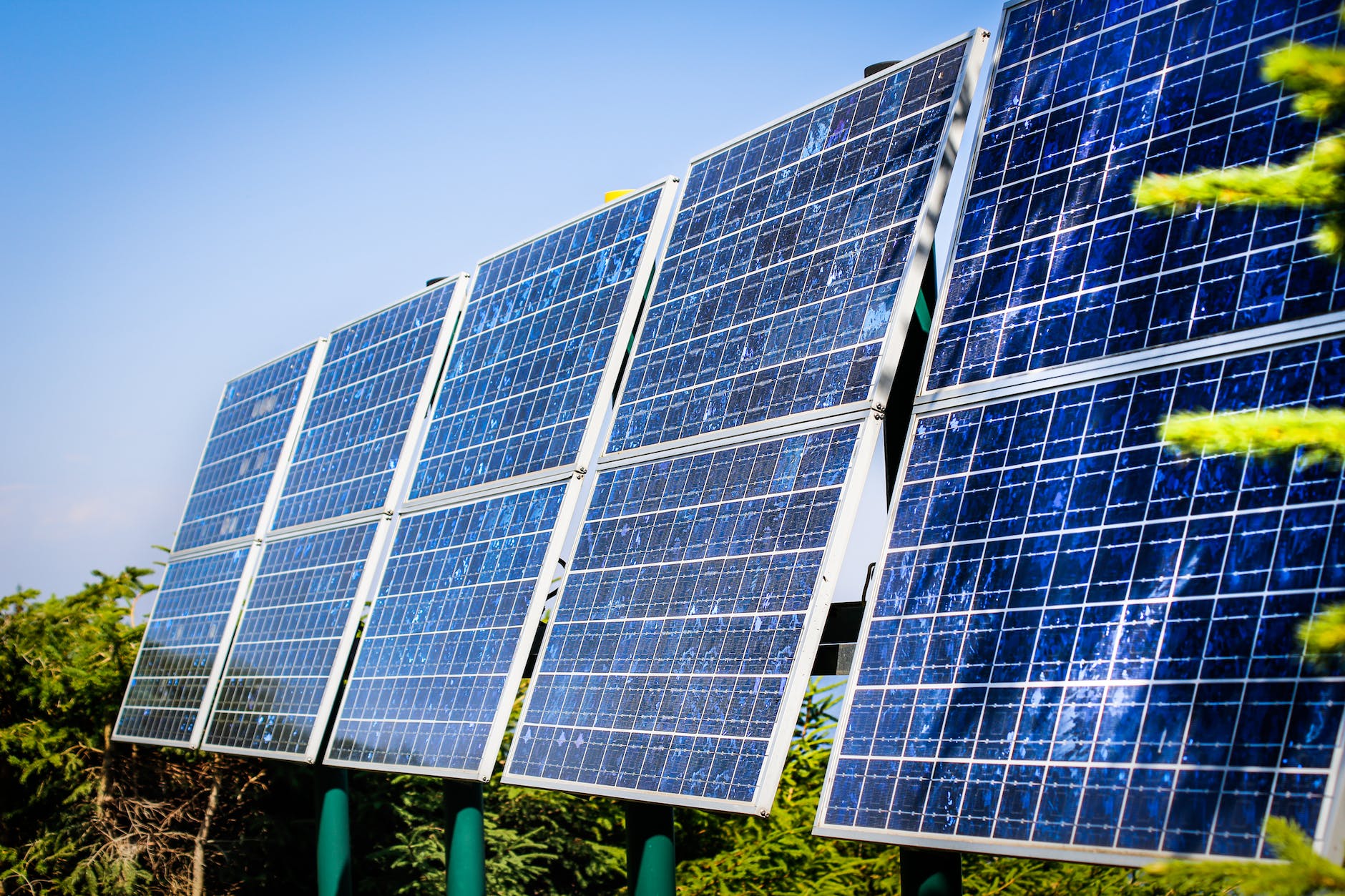A PV module is a pre-assembled group of solar cells and can be considered the smallest unit of a photovoltaic system, while a PV panel includes a group of several PV modules interconnected in series or parallel to provide higher power, thereby ideal for residential and industrial applications. The choice between the two depends on power need, free installation area available, and budget.

PV Basics
The photovoltaic system is a device that uses the photovoltaic effect to directly convert sunlight into electrical energy. In the PV system, people often use words like 'PV module' and 'PV panel', thinking both are the same. In fact, understanding the difference between the design, installation, and maintenance of a PV system; both are very different in many aspects, such as system structure, efficiency, application scenarios, and even return on investment.
PV systems will convert photon energy to electrical energy through the photovoltaic effect of solar cells. Normally, the output voltage from a single solar cell runs in the range of 0.5 to 0.6 volts, although with limited current; hence, many cells have to be integrated together into PV modules or panels to increase output power and voltage. Being continuously developed in the area of efficiency, reliability, and stability, PV systems according to needs can be designed as an off-grid system, grid-connected system, or storage system.
Since PV modules differ from PV panels, the differences between them directly influence the design and application of the system. In a residential photovoltaic system, for example, several pieces of photovoltaic panel are installed to form an array for fulfilling daily electricity needs. On the contrary, large-scale photovoltaic power plants have thousands of modules and panels which combined altogether for large-scale power production and supply. It would be possible to differentiate between the basic elements of the PV module and PV panel in the optimal design of systems to ensure maximum energy efficiency with economic returns.
What’s a PV Module
A photovoltaic module is the smallest unit of a photovoltaic system, including a few numbers of solar cells connected in series or parallel. It typically comprises 60, 72, or 96 series cells within each module for output voltage rise, at usual power ratings from 300 up to 400 watts. However, with the development of new materials and processes, PERC, or Passivated Emitter Rear Cell, and TOPCon, or Tunnel Oxide Passivated Contact cells, the high-power PV modules of today can have over 500 watts, while single-crystal silicon modules of a conversion efficiency of about 23% are achieved.
Generally, photovoltaic modules are encapsulated with high-transmittance, low-iron tempered glass and fixed between the glass and back sheet using an EVA (Ethylene Vinyl Acetate) layer to provide adequate protection and sealing. The material for the back sheet is usually PET or a composite material, providing UV resistance and moisture protection, hence assuring long-term module stability. Moreover, the module frames are usually made from corrosion-resistant aluminum alloy to enhance structural strength for easy installation and protection.
The critical electrical parameters include, but are not limited to, short-circuit current (Isc), open-circuit voltage (Voc), maximum power point (MPP), and temperature coefficient. PV modules are rated based on power and stability according to Standard Test Conditions (STC) and Nominal Operating Cell Temperature (NOCT). STC tests usually involve using 1000W/m² of light intensity at 25°C to ensure module performance in different climates.
Defining PV Panel
A photovoltaic panel is an electricity-generating device, usually composed of a number of photovoltaic modules that collect the power output of the photovoltaic modules. The panel can adopt series or parallel connections according to the specific application needs. Normally, in designing a photovoltaic panel, there would be mounting systems for assuring stable installation on either the ground or buildings, with reception of optimal sunlight for maximum efficiency in power generation.
A general PV panel consists of 2 to 10 PV modules that can be connected in series or parallel according to system output based on actual power requirements. In residential rooftop PV systems, the panels are oriented at optimal angle-usually facing south with a tilt close to the local latitude-joined with inverters and meters for conversion and storage of electricity, hence achieving either grid connection or storage. Good heat dissipation in the design of a PV panel allows it to avoid decreased power generation efficiency caused by temperature effects, and this is an important mounting system design consideration.
Depending on different system requirements, PV panel mounts can be divided into two types: fixed and tracking types. Fixed mounts are normally low-cost and suitable for rooftop installations, while tracking mounts can rotate the panel dynamically to follow the path of the sun to increase light reception. In comparison with fixed mounting systems, single-axis tracking systems increase the efficiency by about 15%-20%, and dual-axis tracking systems increase the efficiency by about 25%-30%. Yet these systems involve higher cost and are usually used in large ground-mounted PV power stations.
Key Differences
The major differences between the PV modules and PV panels are in structure, capacity of output, application scenario, and installation requirement.
A PV module is the power generation unit, comprising several cells, and hence it determines directly the voltage and power of the module. The output power of a single PV module is normally in the range of 300 to 500 watts. Even so, a single panel is incapable of fulfilling high demands for residential or industrial purposes. A PV panel is made up of several modules connected either in series or parallel for higher output power. A typical residential PV system normally requires 10 to 20 PV panels to cover annual power demand.
PV modules have fixed sizes more or less; hence they are easy to manufacture and package in factories. While on-site, the required number of modules can be flexibly assembled into panels. It will increase voltage in series, while it will increase current in parallel. This compatibility can make them meet the input parameter requirements from inverters and other electric devices.
PV panels also include mounting structures to hold PV modules at their calculated optimal angle. Mount design directly impacts the stability and sunlight exposure of PV panels, especially in extreme weather conditions. Strength, wind resistance, and durability are some of the crucial considerations in designing PV panels. In contrast, modules rely principally on the durability and encapsulation of the external materials for long-term stability in output power during outdoor exposure.
Performance Matters
Performance of PV modules and PV panels is based on several factors: module type, encapsulation materials, temperature coefficient, and spectral response.
The conversion efficiency defines the performance of the PV module. Monocrystalline silicon modules show higher photoelectric conversion efficiency at 20-23%, while the polycrystalline silicon modules are a little less efficient, having efficiency in the range of 15-18%. Because of the characteristics of the materials, thin-film modules only achieve about 10% efficiency, but they indeed have shown flexibility and better outputs at low irradiations, hence suitable to be installed on irregular surfaces or light-weight structures.
The temperature coefficient is a crucial parameter which determines the efficiency of the PV module. Normally, with every 1°C increase in temperature, the module output decreases by approximately 0.4-0.5% of the total output capacity. That is to say, in locations with very high temperatures, the efficiency of power generation by modules shall be hugely affected. So when installing PV systems in high-temperature areas like the Middle East or Africa, special consideration should be given to module cooling design and the installation environment to minimize power losses due to heat.
The performance of photovoltaic panels depends more on the location at which they are installed, orientation, and type of mounting. Photovoltaic panels operate best while oriented due south-in the northern hemisphere or due north-in the southern hemisphere-at a tilt angle near the local latitude to optimize sunlight capture for the whole year. Tracking systems can substantially improve power generation for PV panels but add significantly to installation and maintenance costs. Consequently, where budgets allow for the same, appropriate tracking technology enhances the overall energy efficiency and yield of the system.
Applications Compared
The module has a relatively small size and is used in portable solar devices, scientific research, and small power generation. As a result of the low output power, modules are primarily applied to the supply of a single or small device. Many research institutions are now using PV modules for experiments in testing new materials or structures that can improve photoelectric conversion efficiency.
It is generally used in residential, commercial, and industrial PV power generation systems, mainly in rooftop and ground-mounted PV plants. Residential PV systems are generally 3 to 10 kilowatts, with a number of PV panels designed to cater to household power needs for a day. Hundreds or thousands of PV panels connected in a matrix are fed to the grid through inverters in huge ground-mounted PV power plants, thereby providing economies of scale and low-carbon power.
PV panels can also be integrated with storage systems to provide off-grid or hybrid systems. PV off-grid systems are utilized for remote locations or places where grid access is not proper. The electrical power supply is in its own capacity. Above systems are often designed with battery storage or hydrogen storage to allow the continuance of power supply night and during cloudy days, thus ensuring continued availability.
Choosing the Right One
Power requirement, budget of the customer, installation environment, and system size become key factors while choosing between a PV module and a photovoltaic panel. While the needs of small portable devices that require easy installation and lightweight features can be met by PV modules, residential and industrial applications fall into the categories of high-power and long-term power requirement, and for those, PV panels will be needed.
Monocrystalline silicon PV panels, with their much greater efficiency, are more suited to applications involving limited roof installation or very high efficiency in power generation. Considering cost for value, polycrystalline silicon PV panels are a little less efficient but more economical than monocrystalline silicon ones, so they are the most appropriate option for budget-minded users. If flexibility at the time of installation is required, then one may consider thin-film photovoltaic panels. A lot less efficient, this type of panel has the key advantages of being lightweight, flexible, and able to operate well even in low light conditions, which makes them especially suitable for BIPV.



